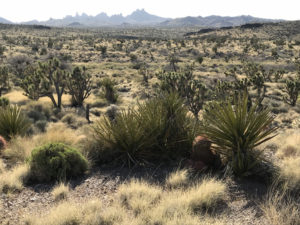For immediate release August 22, 2023
Media contacts:
Greta Anderson, Western Watersheds Project (520)623-1878; greta@westernwatersheds.org
Chris Smith, WildEarth Guardians, (505) 395-6177; csmith@wildearthguardians.org
Michael Robinson, Center for Biological Diversity, (575) 313-7017; michaelr@biologicaldiversity.org
Conservationists sound the alarm about the U.S. reliance on the population
TUCSON, Ariz. – Fourteen conservation groups and individuals sent a letter to the U.S. Fish and Wildlife Service (“Service”) today warning about the severely low numbers of Mexican gray wolves in Mexico, which the agency relies on as a secondary population to buttress against extinction in the United States. Records obtained through a public records request showed just four remaining radio-collared wolves are alive, joined by an unknown, but likely very low, number of uncollared individuals.
“We support Mexican gray wolf recovery in Mexico and hope the U.S. will do all it can to bring back the lobo across the border,” said Greta Anderson, deputy director of Western Watersheds Project. “However, it’s painfully clear that the Service’s reliance on a second, stable population of wolves outside of the U.S. southwest is misplaced. The agency needs to immediately begin building additional populations in the U.S. to ensure against the second wild extinction of this species.”
Mexico has been releasing Mexican gray wolves into the wild since 2011, and the Service has been relying in part on this second population to justify its determination that the U.S. lobos are “nonessential” under the Endangered Species Act. But a recent analysis by Western Watersheds Project demonstrates that only about 20 percent of the released collared wolves survive for longer than one year, with the median lifespan in the wild being approximately 2.5 months.
“This should raise alarms at the U.S. Fish and Wildlife Service,” said Chris Smith, southwest wildlife advocate for WildEarth Guardians. “First, they cannot rely on another sovereign nation to recover imperiled species. And second, they need to do more at home to protect and restore this iconic keystone species, which continues to be illegally killed and otherwise persecuted.”
“The Fish and Wildlife Service should start listening to scientists and release Mexican wolves in the Grand Canyon region and southern Rockies instead of doing the bidding of state game departments dominated by the livestock industry,” said Michael Robinson, a senior conservation advocate at the Center for Biological Diversity. “Biologists in Mexico are heroically trying to keep lobos alive on private lands where there are few deer and no elk. That shouldn’t give U.S. authorities a pass to shirk Mexican gray wolf recovery in the Southwest.”
“The recent data highlighting severely low populations of wild wolves in Mexico raises serious concerns over the U.S. Fish and Wildlife Service’s continued reliance upon a second recovering population in Mexico—where they have no authority to oversee recovery efforts,” said Renee Seacor, carnivore conservation advocate at Project Coyote and The Rewilding Institute. “Instead, the Service should focus their recovery efforts on addressing persistent threats to the population, including continued illegal killings.”
###





